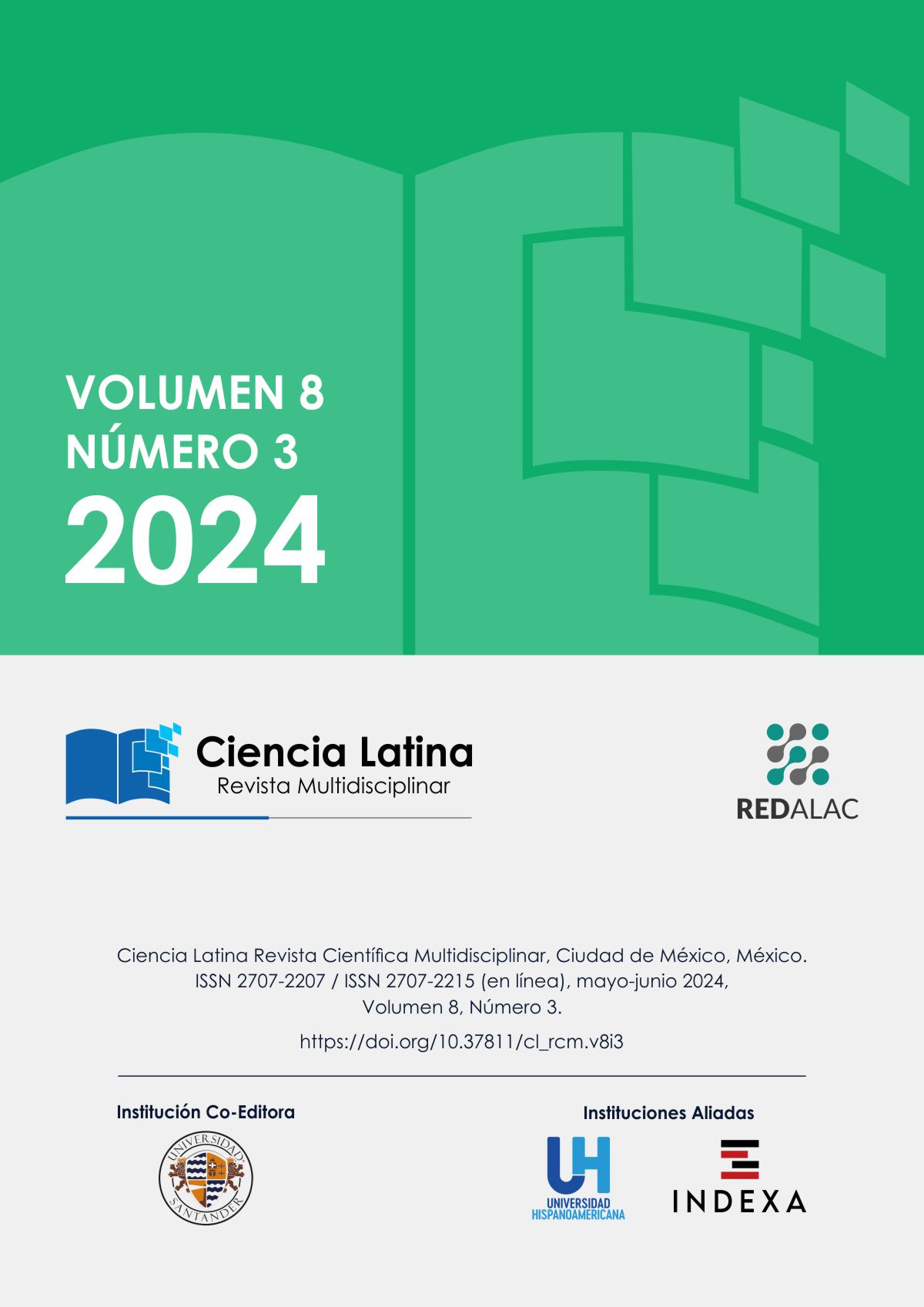Modelos Deep Learning para Diagnóstico de Covid-19 con Tomografías Computarizadas de Kaggle
Resumen
Las estadísticas de covid-19 reflejaron una gran preocupación a nivel mundial y sobre todo en el Perú. Desde marzo del 2020, el brote de la enfermedad por coronavirus empezó a causar muertes en el Perú frente a un sistema de salud poco preparado para este tipo de situaciones, eso se vio reflejado en la limitación de camas UCI disponibles. Por lo tanto, el objetivo de la presente investigación fue hacer uso de modelos de Deep Learning para diagnóstico de Covid-19 haciendo uso de tomografías computarizadas de Kaggle. A nivel internacional se han desarrollado diversas investigaciones haciendo uso de Deep Learning para identificar a las personas que tienen Covid-19 mediante el uso de imágenes médicas, por lo que es importante aprovechar estas aplicaciones para ayudar a las instituciones de salud en el Perú y de esta manera facilitar su trabajo. En la investigación se usaron tomografías computarizadas para diagnosticar el Covid-19 recogidos de la plataforma de datos abiertos de kaggle obteniéndose que el modelo de Deep Learning más adecuado para el diagnóstico de Covid-19 con tomografías computarizadas del tórax de kaggle fue el modelo de Convolutional Neural Network GoogleNet, el cual obtuvo un accuracy superior al 90%.
Descargas
Citas
A. Chaddad, L. Hassan and C. Desrosiers (2020). Deep CNN models for predicting COVID-19 in CT and x-ray images. Journal of Medical Imaging.
A. Krizhevsky, I. Sutskever and G. E.Hinton (2012). Image net classification with deep convolutional neural networks. Proceedings of the 26th Annual Conference on Neural Information Processing Systems, NIPS 2012, pp. 1097–1105.
A. Voulodimos, N. Doulamis, A. Doulamis and E. Protopapadakis (2017). Deep Learning for Computer Vision: A Brief Review. Department of Informatics, Technological Educational Institute of Athens.
C. Szegedy, W. Liu, Y. Jia et al. (2015). Going deeper with convolutions. Proceedings of the IEEE Conference on Computer Vision and Pattern Recognition, CVPR 2015, pp. 1–9.
D. H. Hubel and T. N. Wiesel (1962). Receptive fields, binocular interaction, and functional architecture in the cat’s visual cortex. The Journal of Physiology, vol. 160, pp. 106–154.
D. Yang, C. Martínez, L. Visuña et al. (2021). Detection and analysis of COVID-19 in medical images using deep learning techniques. Scientific Reports. Springer Nature.
I. Soriano, A. Ezponda, F. Mendoza, A. Igual, A. Paternain, J. Pueyo, and G. Bastarrika (2021). Hallazgos en la tomografía computarizada de tórax en las fases evolutivas de la infección por SARS-Cov-2. Radiología, vol. 63, no. 3, pp. 218–227.
K. Fukushima (1980). Neocognitron: a self-organizing neural network model for a mechanism of pattern recognition unaffected by shift in position. Biological Cybernetics, vol. 36, no. 4, pp. 193–202.
Zarate Bujanda , J. L., Moscoso Paricoto, I., Leva Huamán, M. N., Dueña Cahua, S., & Zarate Bujanda, C. (2024). Relación de la educación inclusiva con el desarrollo profesional en estudiantes de la Universidad Nacional de San Antonio Abad del Cusco. Estudios Y Perspectivas Revista Científica Y Académica , 4(2), 344–358. https://doi.org/10.61384/r.c.a.v4i2.226
Noboa Pullaguari, K. D. (2024). Beneficios y Consideraciones de la Aplicación Tópica de la Leche Materna. Revista Científica De Salud Y Desarrollo Humano, 5(2), 154–164. https://doi.org/10.61368/r.s.d.h.v5i2.126
Elizalde González, C. D. (2024). La Percepción del Estudiante de Secundaria hacia la Práctica Docente y cómo Influye en su Proceso de Aprendizaje . Emergentes - Revista Científica, 4(1), 49–64. https://doi.org/10.60112/erc.v4i1.89
Mendoza, P. (2023). Assessment of Ethics in Nursing Practice: Perspective of Social Service Students. Revista Veritas De Difusão Científica, 4(1), 52–67. https://doi.org/10.61616/rvdc.v4i1.37
Da Silva Santos , F., & López Vargas , R. (2020). Efecto del Estrés en la Función Inmune en Pacientes con Enfermedades Autoinmunes: una Revisión de Estudios Latinoamericanos. Revista Científica De Salud Y Desarrollo Humano, 1(1), 46–59. https://doi.org/10.61368/r.s.d.h.v1i1.9
M. Oquab, L. Bottou, I. Laptev, and J. Sivic (2015). Is object localization for free? - Weakly-supervised learning with convolutional neural networks. Proceedings of the IEEE Conference on Computer Vision and Pattern Recognition, CVPR 2015, pp. 685–694.
M. Tygert, J. Bruna, S. Chintala, Y. LeCun, S. Piantino, and A. Szlam (2016). A mathematical motivation for complex-valued convolutional networks. Neural Computation, vol. 28, no. 5, pp. 815–825.
N. Alam, M. Ahsan, M. Based, J. Haider and M. Kowalski (2021). COVID-19 Detection from Chest X-ray Images Using Feature Fusion and Deep Learning. Sensors, vol. 21, pp. 1480.
R. Girshick, J. Donahue, T. Darrell and J. Malik (2014). Rich feature hierarchies for accurate object detection and semantic segmentation. Proceedings of the 27th IEEE Conference on Computer Vision and Pattern Recognition, CVPR 2014, pp. 580–587.
S. Bhattacharya, P. Kumar, Q. Pham, T. Reddy, S. Rama, C. Lal and M. Alazab (2020). Deep Learning and medical image processing for coronavirus (COVID-19) pandemic: A survey. Elsevier.
S. Minaee, R. Kafieh, M. Sonka, S. Yazdani and G. Jamalipour (2020). Deep-COVID: Predicting COVID-19 from chest X-ray images using deep transfer learning. Elsevier.
Y. L. Boureau, J. Ponce and Y. LeCun (2010). A theoretical analysis of feature pooling in visual recognition. Proceedings of the ICML.
Y. LeCun, L. Bottou, Y. Bengio and P. Haffner (1998). Gradient-based learning applied to document recognition. Proceedings of the IEEE, vol. 86, no. 11, pp. 2278–2323.
Y. LeCun, B. Boser, J. S. Denker et al. (1989). Backpropagation applied to handwritten zip code recognition. Neural Computation, vol. 1, no. 4, pp. 541–551.
Derechos de autor 2024 Richard Fernando Fernández Vásquez

Esta obra está bajo licencia internacional Creative Commons Reconocimiento 4.0.











.png)




















.png)
1.png)


